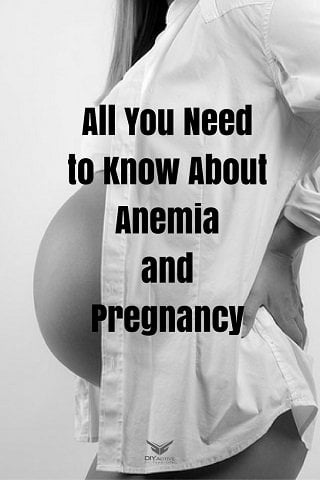Pregnancy Comes with Concerns. Don’t Let Anemia Be One of Them!
Autoimmune hemolytic anemia is a condition where the immune system produces proteins, called antibodies, which attack the normal red blood cells. This process results in the destruction of the red blood cells, which leads to their decreased numbers. This causes anemia. The good news is that you can diagnose this and treat it, so inform yourself about this condition here.
Overview of autoimmune hemolytic anemia
The causes of autoimmune hemolytic anemia can be divided into two categories: primary and secondary. The primary cause of this anemia is unknown and makes up half of the reported cases of the disease. In the other half of cases, secondary conditions and factors result in the disorder.
Warm- and cold-type anemia
There are two types of secondary autoimmune hemolytic anemias. The first is warm-type and the second is cold-type.
The warm-type occurs as a result of secondary conditions such as systemic lupus erythematosus, scleroderma, Crohn’s colitis, rheumatoid arthritis, as well as lymphoproliferative conditions such as chronic lymphocytic leukemia and lymphoma. Rare causes of this warm-type include infections and non-lymphoid cancers.
The cold type of the disease is commonly caused by the mentioned lymphoproliferative conditions. It can also be caused by infections such as viral pneumonia, infectious mononucleosis, and mycoplasma.
Lots of big words, but suffice it to say: you can find the root cause of warm-type anemia.When you know that, you can start to treat it!
Signs and symptoms
The clinical manifestations of autoimmune hemolytic anemia include pale skin, fatigue, dizziness, heart palpitations, shortness of breath, and, in severe cases, loss of consciousness and even death. Due to the destruction of red blood cells, bile is released into the bloodstream and this can result in jaundice, itchy skin, and dark or discolored urine.
Anemia in pregnancy
On top of the regular pains of pregnancy, like back pain, you can also get physiological anemia. This means that anemia in pregnancy is a foreseeable situation that needs to be monitored and managed accordingly.
The reason for the anemia is because at around the second or third month of pregnancy, the body produces more plasma in the bloodstream. This causes the red blood cells to become diluted, and the result is that pregnant women experience signs and symptoms of anemia.
This anemia doesn’t occur as a result of the destruction or loss of red blood cells, but rather due to their decreased concentration.
This physiological anemia is managed by supplementing with iron so your body can produce more red blood cells, and therefore increase their concentration in the bloodstream.
Autoimmune hemolytic anemia in pregnancy

Up until 2015, clinical studies show that autoimmune hemolytic anemia caused by pregnancy is poorly described in the medical literature. In the majority of reported cases, it is demonstrated that this anemia occurs in the late stages of pregnancy and that patients respond well to treatment with steroids — with or without blood transfusions — without impacting the baby. There have also been reports that the condition resolved spontaneously after the pregnancy.
Autoimmune hemolytic anemia in pregnancy can be dangerous for both the mother and her unborn fetus, especially if the antibodies formed against the red blood cells are immunoglobulin G. The reason for this is because this particular type of immunoglobulin can cross the placenta and affect the unborn baby.
What do the studies say?
Although the mentioned therapies have been shown to be effective in reducing the autoimmune reaction directed against the red blood cells, there are documented cases where these therapies did not work. In one such case, the mother presented with severe symptomatic anemia. Warm-type autoimmune hemolytic anemia was diagnosed. Despite the mentioned therapies being initiated in this patient, the fetus was not responding to the medication and there was continued anemia.
It was decided then to extract the baby and to offer the patient the option of having the spleen surgically removed. The latter is a form of therapy in autoimmune hemolytic anemia in non-pregnant patients when conservative therapy fails. After delivery of the baby at 30 weeks gestation, the mother was managed with steroids and blood transfusions, and the baby was treated with transfusions and phototherapy to address the bilirubin buildup in the bloodstream. Both mother and child made full recoveries within a few weeks, and neither suffered any complications.
In another study, it was shown that two cases of women being diagnosed with warm-type autoimmune hemolytic anemia occurred in the late third trimester of their pregnancies.
In both cases, the patient responded to steroid therapy without receiving transfusions, and healthy babies were delivered without any clinical features of hemolysis.
Wrap-Up
The main point of these studies is that autoimmune hemolytic anemia is treatable. You should recognize the symptoms of anemia and make yourself aware of their impact on your pregnancy.
However, the nature of the condition is still not clearly understood, and further investigations into the disorder are needed. At the end of the day, the main purpose of treating autoimmune hemolytic anemia is to stop the breakdown of the red blood cells and correct the anemia.
- Autoimmune Hemolytic Anemia during Pregnancy - September 3, 2017